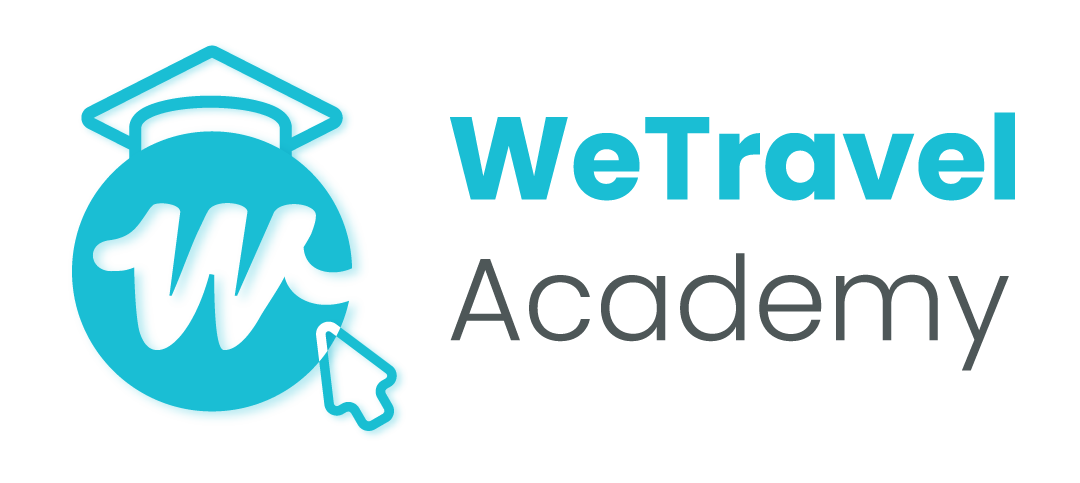Do you want to know how to create a webinar for your travel business?
At WeTravel, we regularly host webinars for our community. With so many people networking, communicating, learning, buying, and selling online, holding webinars can be a great marketing and communication tactic to grow your following.
If it’s your first time creating a webinar, there are several key action points to tick off. This will ensure it all goes off without a hitch.
Whether you want to promote your new destination, provide travelers with tips before an upcoming trip, or host an industry-relevant panel discussion, properly preparing will ensure the session runs smoothly.
Here are step-by-step instructions to help set you up for success.
How To Create A Webinar For Your Travel Business In Seven Steps
1. Carefully Select A Webinar Topic
You may not realize just how many great resources are at your fingertips to help you pick a topic for your webinar.
You could:
- create a poll on social media to ask your audience what they want to hear about
- check forums and message boards to see what questions travelers need answering at the moment
- select a topic based on questions you commonly get asked by your community
- dial into relevant industry conversations that people are having online
There are two points to keep in mind when pinning down your topic.
First is to select a topic that your intended audience will find engaging.
You might have an idea in mind that seems pretty interesting. But, it’s critical to test the water to see if it’s what other people want to hear about too. Otherwise, you might end up with low event attendance.
And second is to ensure you can comfortably talk about the topic and add value for the audience.
2. Decide On A Format
With the topic set, it’s time to choose a suitable webinar format.
The subject matter you talk about will have a part to play in determining the format you use. For example, the topic complexity and number of speakers may shape the structure of your presentation.
Typically, webinars follow one of four formats, being:
Single Speaker Session
This is a single host event presenting to the audience and answering questions directly.

Interview
This is usually a 1-on-1 interview with an industry expert answering predetermined questions.
Live Q & A
Often incorporated at the end (although not always), it is possible to use your webinar to answer audience questions.
Let the attendees know ahead of time that you will take questions. This way, they can prepare and send these to you for discussion during the event.
Panel Discussions
Here, you gather panel members, usually industry experts, to put heads together and discuss a particular topic.
This is a highly engaging format as it is often fluid in the direction it takes. A good moderator will drive topics and conversations while engaging your audience in the discussion too.
3. Check Your Set-up
Don’t underestimate the importance of having the right equipment.
Even with the most engaging lineup and talking points, if you aren’t able to present effectively, you might lose your attendees' interest.
Thankfully, most of the time, the technology we use every day can produce quality content.
Before running a webinar, run through the following points to ensure you’re prepared:
-
Computer Connection
Make sure that your PC or laptop is fit for the purpose. During the webinar, it will possibly need to run multiple applications at once without struggling or slowing down.
You will also need a reliable internet connection to ensure that your audio and video are smooth and clear. The last thing you want is for there to be any buffering or slow loading times.

-
Camera Quality
Your laptop’s built-in camera might work just fine for a webinar, but do check it beforehand to ensure you can produce clear video.
As a benchmark, it should be able to record or stream a minimum of 1080p @ 30 frames p/sec.
If the built-in camera is not up for the task, invest in an external plug-in camera.
It will come in useful.
After all, if you are learning how to create a webinar for your travel business, you probably know that you will have to host more than one for the strategy to gain traction with your audience.
-
Microphone Clarity
Having clear sound during the webinar is absolutely key to its attendance. If people have a hard time hearing you, they won’t be motivated to stay on or listen in.
Again, if you feel a little shaky on the quality of the built-in mic on your laptop, it’s worth investing in an external plug-in microphone.
-
Space You’re In
You need a suitable space to host your webinar on the day.
It helps to clear the room of clutter and distractions. Ensure that your lighting is sufficient, that you have a quiet environment to work in, and be sure to put those nearby phones and tablets on silent.
4. Prep Your Webinar Content

You can really stand out during the webinar with the content you present.
Depending on the topic and format, you might want to:
- prepare a script
- display slides
- show short video clips
- Share eye-catching imagery
- collect quotes from speakers
5. Market Your Event
It’s no use inviting interesting speakers, creating great content, and hosting a webinar if nobody knows about it!
Marketing your event can make all difference in determining whether or not there is a great turnout. Thankfully, it is easier than ever to market your webinar.
Send an invite out to your email database, share the news on social media, post in relevant industry groups, and create a landing page on your website for people to sign up.
In your marketing poster, don’t forget to include:
- the webinar title
- a short blurb on what to expect
- the time and date
- speaker information
- invite to submit questions for answering
- call to action to sign up
6. Practice, Practice, Practice
Before the big day, do a dry run.
A rehearsal will highlight any issues that may be in the presentation. It will also give you a running time (a good benchmark to aim for a total of 60 minutes, including the Q&A) and get you comfortable with all your equipment and content.

If you have multiple guests on your webinar, be sure to run through the proposed script with them too.
You may also want to assign roles to each person. Whether it is to act as a moderator, or track attendee comments and questions, ensure that everyone is on the same page about responsibilities.
7. Prepare To Go Live
By now, you’ve done most of the hard work. Things should fall into place on the day if you’ve followed all the steps.
However, there are still things to prepare for post-webinar.
You will probably want to record the session. Decide whether you need to create a member’s-only area for the audience to access it? It’s an opportunity to add contact details to your database.
It’s also a good idea to send the recording to the attendees as a follow-up to the event. An email that shares the event highlights and links to the landing page or member zone should do the trick.
Final Word
Webinars offer an opportunity to engage your ideal audience directly by addressing issues and answering relevant questions.
In doing so, you can create space for meaningful interactions and build long-term relationships with people who may well turn from prospects into clients - good luck!
If you would like to receive more content like this direct to your inbox, sign up below for our newsletter.
New resources, straight to your inbox
We’re committed to your privacy. WeTravel uses the information you provide to us to contact you about our relevant content, products, and services. You may unsubscribe at any time.





